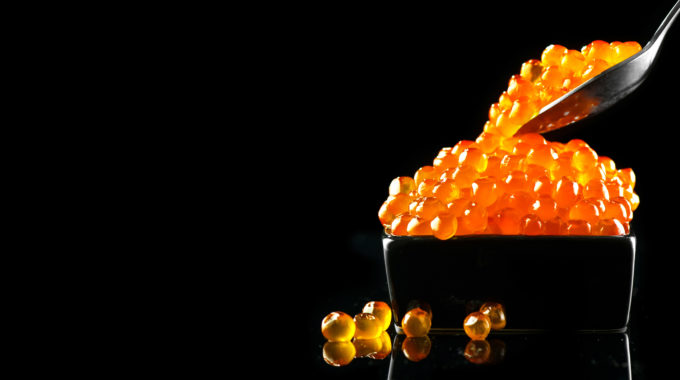Jewels of the sea: all about roe
When it comes to food, little is more associated with luxury than caviar. Traditionally, caviar refers only to salt-cured roe from wild sturgeon in the Caspian Sea and Black Sea, although other fish roe can be referred to as “caviar” if the name of the fish species precedes it. Even a small tin of genuine caviar can set you back hundreds of dollars. Or, if you fancy splashing a little extra cash, you can pick up a tin of white gold caviar, made from the rare albino sturgeon, for around $100,000. But while we now consider caviar to be the height of decadence, it was once seen as little more than a cheap bar snack.
“As recently as the 1800s, if you went to a pub for a drink, they would give you caviar,” says seafood expert Alex Stollznow from Sydney Fish Market. “Nowadays, they give you salty peanuts or pretzels to make you thirsty and encourage more drinking. Back then, when people caught fish for meat, the roe sacs – which female fish will have for two or three months of year – were just a waste by-product. Fishers would sell it to pubs for pence, and it would be the free bar snack you get to encourage more beer drinking.”
It was the age of the Russian tsars that sent caviar into the stratosphere. They would serve it at their lavish banquets paired with ice-cold vodka. Soon, caviar was being served in royal and noble houses across Europe. Sturgeon numbers dwindled, and the price skyrocketed. What was once “peasant food” was now firmly in the realm of aristocracy.
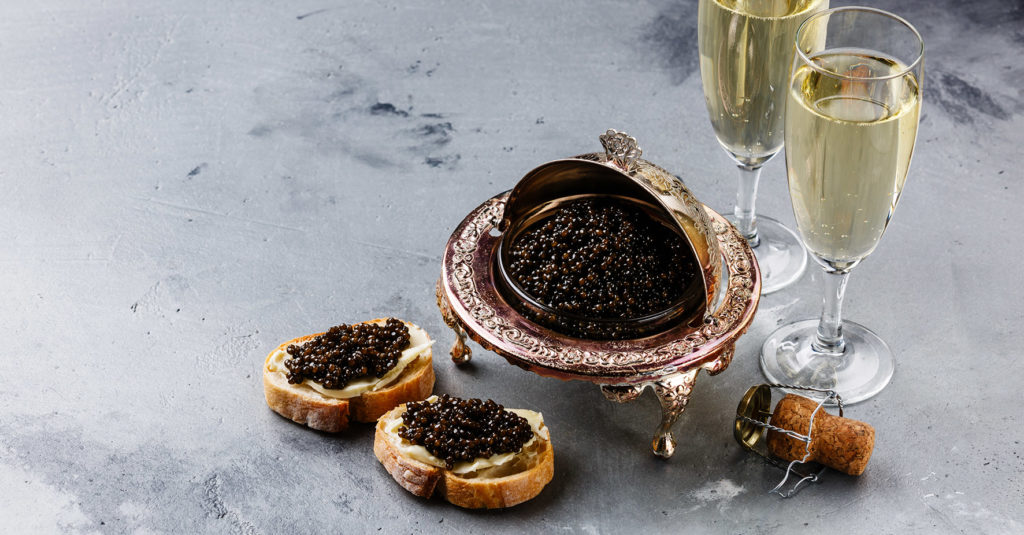
A seasonal treat
While caviar is seen as the queen of roe, you can also find a culinary experience fit for a tsar with the roe of any number of other seafood species.
“A female fish will only have roe when it’s in season,” Stollznow says. “With sea urchins, for example, they always have roe. For fish, it’s an occasional secondary harvest. The mullet run is happening in northern NSW right now. They’re sending down the creamiest, yellowest roe. Mullet’s a cheap fish that sells for $2 a kilo; the roe is going for $20 to $30.”
Some crustaceans will have visible roe. Lobster eggs can be found clustered under their tail. Scampi have beautiful blue eggs, like little jewels. Some call them “sapphires of the ocean”.
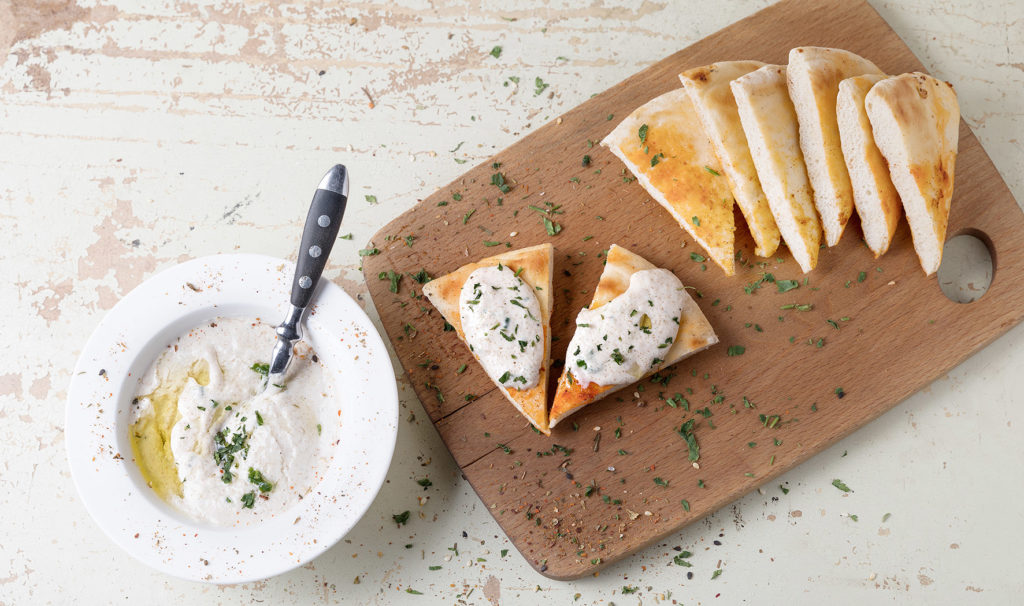
Life-changing dip
For something really special, you should try to get your hands on some blue-eye trevalla roe. Stollznow waxes lyrical about a blue-eye trevalla roe taramasalata that he enjoyed at Anason, a Turkish restaurant at Sydney’s Barangaroo.
“Blue-eye trevalla is a deep-sea fish with fatty, sweet white flesh,” he says. “And because these fish can weigh over 25 kilograms, the roe sacs are bigger than a football; about two kilos each sac, with millions of eggs. You’ve got this secondary harvest from a big fish that, in the right hands, is an incredibly premium ingredient.
“I still think about that taramasalata, and it was five years ago. It was incredible. I don’t think there’s an Australian alive who wouldn’t enjoy eating that.”
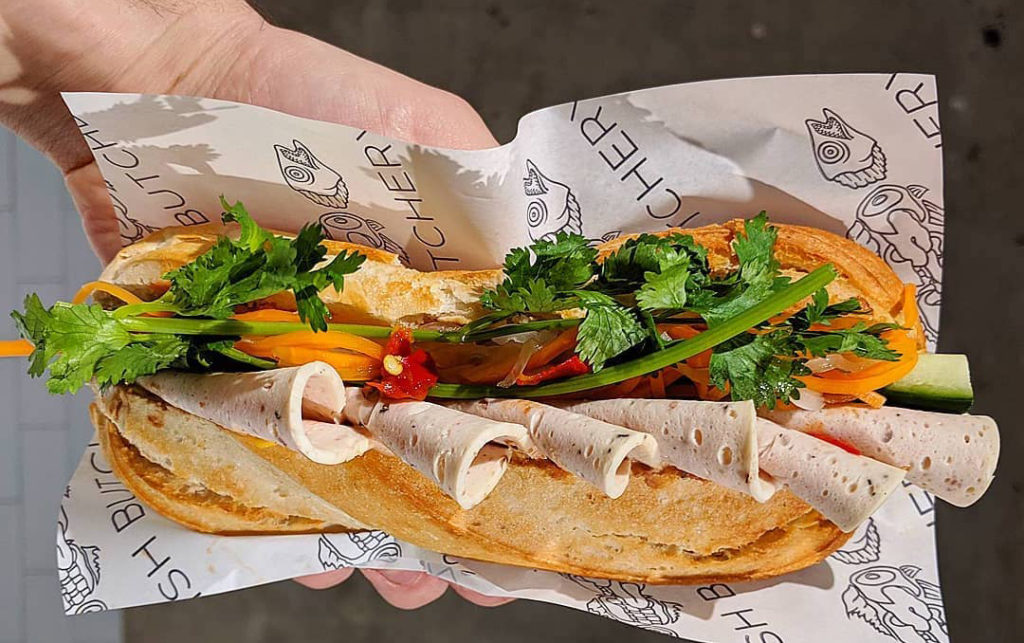
From roe to milt
If the thought of fish eggs makes you squeamish, you might want to look away for this next bit. While female fish have roe, male fish have milt. Yep, basically fish sperm.
“It’s in thin, elongated membranous sacs,” Stollznow says. “As an ingredient, it’s less versatile, but it’s still quite versatile. You can poach it till it sets and slice it and it’s a bit like a blancmange. You’d be surprised at how tasty it is. It’s not seen to be as premium as roe, but it’s still worth more than the fish per kilogram.”
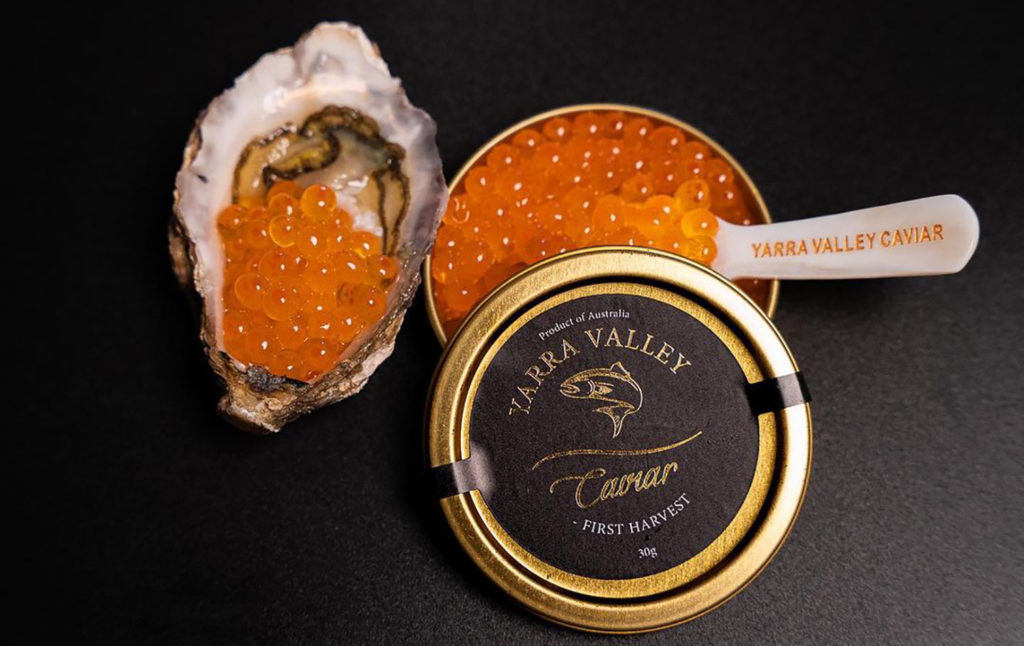
Australian-made roe
Whether you choose roe or milt, both are a seasonal delicacy, depending on which fish are heading into spawning season. But roe in particular is widely available here in Australia, particularly from farmed salmonids such as rainbow trout and Atlantic salmon.
For those worried about seafood welfare, you don’t need to kill farmed fish to harvest their roe or milt. All you need is some vodka, some seawater and a bottle of clove oil.
“You put 10 drops of clove oil per cup of vodka, shake it to bind it, pour it into seawater and put the fish in it,” Stollznow says. “That will act as a general anaesthetic and knock the fish out. You then pull the fish out of the water and milk the belly. That’s how they breed salmonids in fish farms. They’ll milk a couple of girls and a boy into a bucket. Then they’ll stir it together to fertilise the eggs and put them in a hatchery.”
Tasmania’s Huon Aquaculture is one of two salmon caviar producers in Australia. It produces two types of salmon caviar: ocean-grown and freshwater-grown hand-milked. Huon also produces a freshwater-grown hand-milked ocean trout caviar.
Yarra Valley Caviar in Victoria also produces farmed salmon and trout caviar. The fish are milked for roe by hand once a year before being returned to their ponds. The business is also an exclusive importer of Polanco sturgeon caviar from Uruguay.
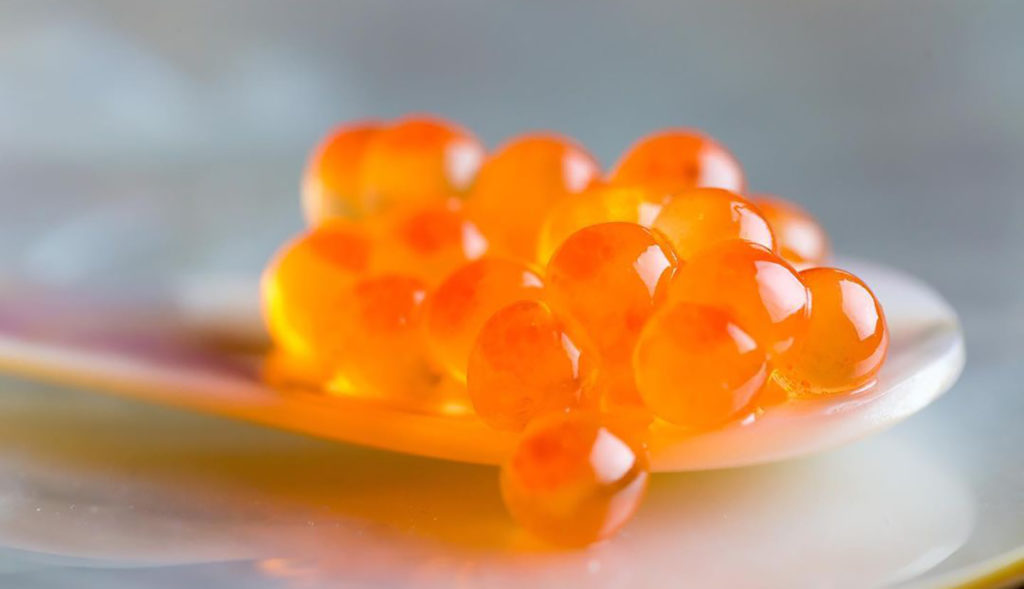
Roe 101
So, if you’re new to the world of roe, how should you begin? While the stuff out of jars is good for convenience, if you really want to taste the best roe, buy it when it’s in season.
“Mullet are in season at the moment,” Stollznow says. “Coming into the end of winter, you’re going to get those lovely broad flat casings of mirror dory roe. Flathead roe is a real treat. Coming through winter, you’re going to see the world’s best blue-eye trevalla roe.”
When using roe in your cooking at home, don’t try to mask it or hide it. Something so pretty and so delicious deserves a starring role on the plate.
“It’s good to feature it,” Stollznow says. “A heaped tablespoon of roe on top of a finished dish can be really beautiful. For instance, salmon eggs have a lovely rusty orange colour. The light penetrates through them and they’re like little gemstones.”
And while you might feel a tad reckless about treating yourself to some roe, it’s not quite as wildly extravagant as many believe it to be. It can actually be a great way to immerse yourself in “scale-to-tail” seafood consumption.
“Roe is something you should eat when it’s a by-product,” Stollznow says. “You’re basically taking it out of the bin. The fishers get a secondary sale, and less of the fish goes to waste.”


